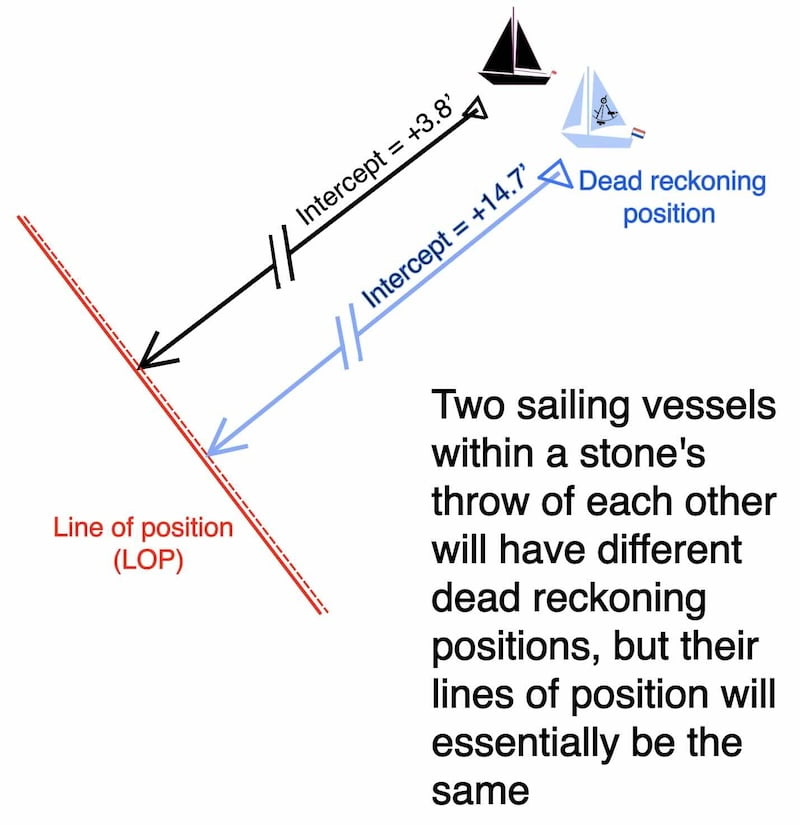Also, assuming familiarity with the observed and calculated height of the sun, this page offers a brief summary of the intercept and the sun’s line of position.

Moreover,fFor a more in-depth exploration, you can navigate to the dedicated section on the principles of the sun sight.
Both topics are integral to the overall purpose of this website, which aims to guide you through the process of calculating the line of position (LOP).
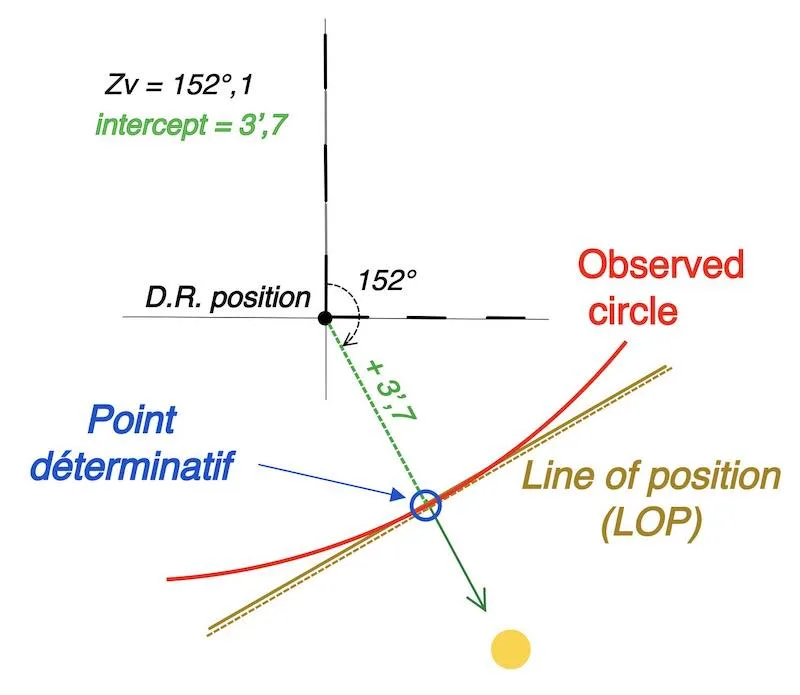
The La Rochelle exercise serves as the starting point, offering step-by-step guidance towards achieving this objective, accompanied by thorough theoretical explanations.

Intercept and sun’s line of position:
intercept = Ho – Hc
observed altitude (Ho)
calculated altitude (Hc)

compare Ho et Hc
Certainly, you should understand that these two elements are completely independent of each other.
However, the time of your observation should correspond to the time of your calculated height.
On the other hand, your dead reckoning position should be as accurate as possible.
Therefore, if our dead reckoning is not too far off from our true position, we can compare the circle of positions Ho with Hc.
We can estimate that the circle of position Ho is parallel to the circle of position Hv, since the two circles are close.
It is preferable that the dead reckoning uncertainty does not exceed more than 30 miles.
As a result, using dead reckoning on the map and the direction of the sun, we can draw a Line of Position perpendicular to the direction of the sun that passes over our dead reckoning position.
Consequently that’s our reference!

The distance between the two lines of positions is called the intercept and we adopt Ho – Hc = intercept.
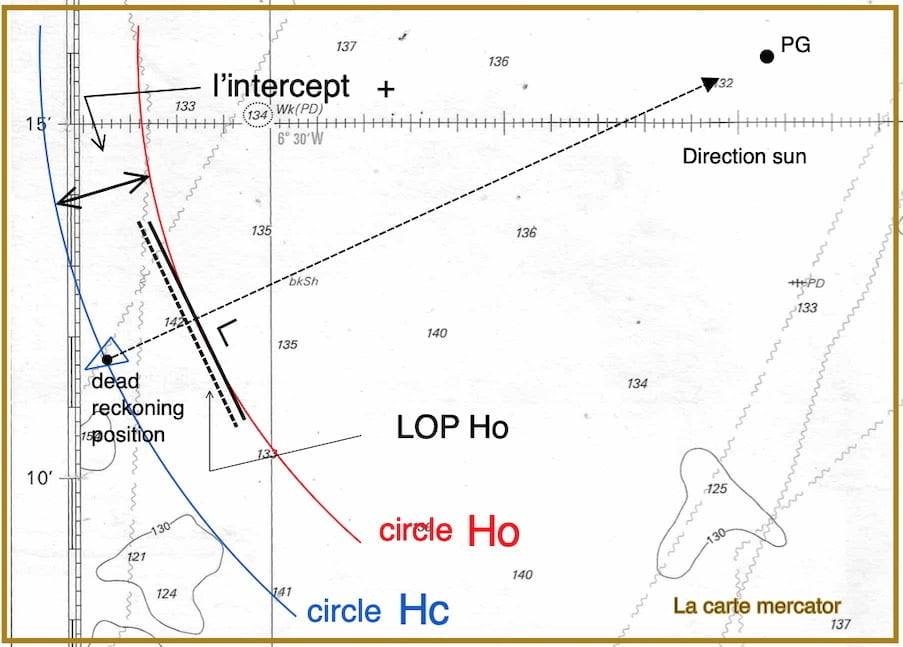

In reality, the L.O.P. of our D.R.position never gets drawn.

Intercept and sun’s line of position
How to calculate the intercept?
intercept = Ho ⎼ Hc
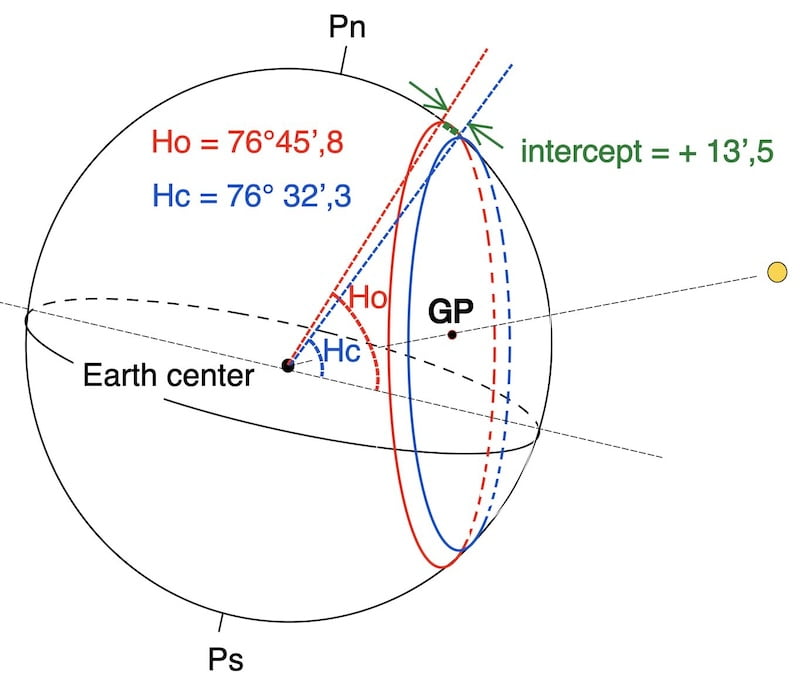
In conclusion, to better understand the 13,5′ see the definition “nautical mile”
Intercept positive or negative:


Intercept and sun’s line of position
How to draw the LOP on the map
two examples:
+ “towards the sun”
– “away from the sun”

Finally, we will learn how to construct a map ourself.
Le point déterminatif
Furthermore, in navigation, there is a concept known as “le point déterminatif” in French, which designates a specific location on the observed circle.
As a result, this point represents the spot where the distance to our dead reckoning position is at its minimum.
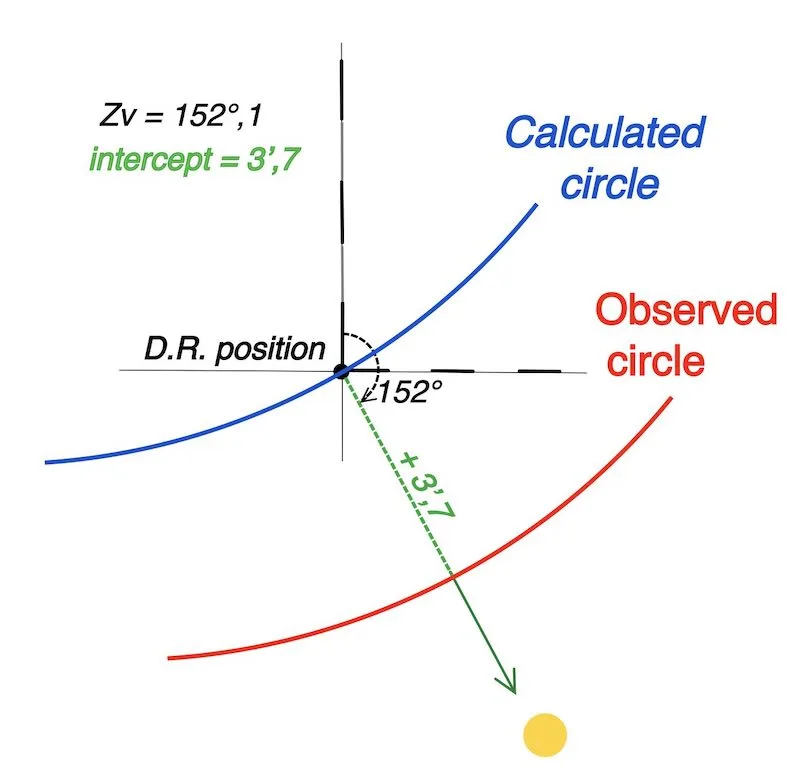

If your dead reckoning (D.R.) is well-estimated and you have taken only one sight for the day, it is conceivable that this particular point (le point déterminatif) serves as a potentially superior D.R. position compared to your previous estimate.
Nevertheless, it’s crucial to recognize that this observation is not an absolute rule; rather, it highlights a noteworthy consideration in navigation terminology.
Final observation:
